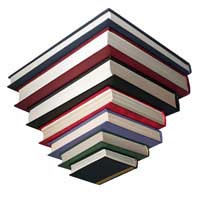
Theodor Seuss Geisel was not apolitical.
“I am the Lorax and I speak for the trees”? Guess what the political message is there.
And, while on first glance some of
his black and white drawings look like they could have come out of
Hop on Pop, on second glance, they contain swastikas and calls for American patriotism. Not the type of thing you want to read with your four year old before bed.
When he was not charming young children, or t
aking up bets that lead to Green Eggs and Ham, Seuss drew a lot of cartoons that could look a lot like American propaganda during WWII; I find his
caricatures of the Germans and Japanese disconcerting.
But it’s one thing to talk about authorial intention, and recognize that some children’s books are chock full of political messages (g
old standard vs. silver standard anyone?) It’s an entirely different thing to usurp the iconic lines for new political purposes. (I never thought I’d use the words “authorial intention” to write about Seuss, let alone post-structuralism, but here I go).
Try this on for size: The story “
Gertude’s One Feathered Tail,” about a bird who takes a pill to grow a bigger tail only to realize that with a bigger tail she can no longer fly, is a warning about the dangers of athletes taking steroids.
Or
How the Grinch Stole Christmas is about the triumph of Capitalism against communists who want to take your hard-earned presents.
Thought Gertude was about loving yourself and your body? Yeah. Me too. And thank goodness I have yet to see the steroid interpretation. Thought
Grinch was a sweet Christmas story? Uh huh.
But what about this?
Horton’s famous mantra “a person’s a person no matter how small,” made a great Seussical the Musical song, and probably has made millions of small children feel vindicated. But, according to some,
Horton’s quest to save Who is an anti-abortion message. Never mind that all of the Whos seem to already have been born, “small” now extends to the fetus, much to the distress of Geisel’s widow.
Interestingly enough, though I totally made up the capitalist interpretation of Grinch, Geisel’s estate spends a fair amount of time
pursuing politicians who call their opponents grinches. (Side note, he also
coined the term nerd, but it was a lot more innocuous in his book then it is when a kid with glasses is harassed).
There’s a whole school of literary thought that supports this kind of interpretation. Ever been in a class where every book is about class struggle? Phallic symbols? Gender equity? Any political cause can be applied to any book, something that drove me mad when I first read the theories, prompting me to rant in a response paper: “Freudian Criticism and the schools of thought that stemmed from it make me want to tear my hair out.”
It’s bad enough that a recent press release about global warming included a stanza from Dylan Thomas’
“Do Not Go Gentle Into That Good Night,” even though it is so clearly about a dying father, not the planet, but why corrupt children’s books?
Why make kids trying to watch the new movie of
Horton Hears A Who walk past protesters holding photos of bloody fetuses? Regardless of my own view on the abortion debate (I try to keep my politics out of this blog), the stories of those protests drive me nuts.
For Seuss’ sake, find your own slogan.
Image from the Web site Dr. Seuss Went To War.






